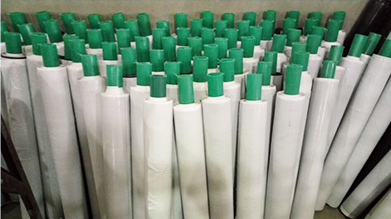Understanding Floor Marking Tape Specifications
Floor marking tape plays a crucial role in enhancing safety and organization in various environments, including warehouses, factories, hospitals, and public spaces. It serves as a visual guide for both pedestrians and vehicles, helping to delineate pathways, identify hazardous areas, and establish designated zones for specific activities. Given its importance, it is essential to understand the specifications that determine the effectiveness and suitability of floor marking tape for different applications.
Types of Floor Marking Tape
Floor marking tapes come in various types, each specifically designed for particular surfaces and functions. The most common types include
1. Vinyl Floor Marking Tape This is the most popular type due to its durability and versatility. It is often used in industrial settings, where it can withstand heavy foot and vehicle traffic. Vinyl tape is resistant to chemicals, moisture, and abrasion.
2. Reflective Floor Marking Tape This type contains reflective material, making it ideal for low-light conditions. It increases visibility at night or in dark environments, enhancing safety at all times.
3. Anti-Slip Floor Marking Tape Designed for areas that may be prone to slips and falls, this tape offers a textured surface that provides additional traction.
4. Colored Floor Marking Tape Different colors can signify various functions or hazards. For example, yellow is commonly used for caution, while red indicates danger.
Key Specifications to Consider
When selecting floor marking tape, several specifications must be taken into account to ensure the tape meets the demands of the environment in which it will be used.
1. Adhesive Strength
The adhesive strength of floor marking tape is critical for ensuring that it stays in place, even under heavy use. A strong adhesive is necessary for surfaces that experience frequent foot or vehicle traffic. It should be able to bond effectively to various floor types, including concrete, asphalt, and tile.
2. Thickness
floor marking tape specification

The thickness of the tape affects its durability. Thicker tapes tend to last longer and resist wear, making them suitable for high-traffic areas. Typical thicknesses can range from 1.0 mm to 1.5 mm, but thicker options are available for extremely demanding environments.
3. Width
The width of the tape will depend on its intended use. Standard widths typically range from 2 inches to 4 inches. Wider tapes provide greater visibility and can cover larger areas, while narrower tapes may be more suitable for intricate patterns or designs.
4. Color and Visibility
The color of the tape is essential for conveying messages effectively. Different colors are recognized universally for specific meanings (e.g., red for danger, green for safety). Additionally, the tape should have a finish that enhances visibility, potentially utilizing fluorescent or reflective materials.
5. Temperature Resistance
In environments where temperature fluctuation is common, it is crucial to consider the temperature resistance of the tape. Some tapes are designed to withstand extreme heat or cold without losing adhesion or becoming brittle.
6. Chemical Resistance
For industrial settings, where spills of oils, solvents, or other chemicals are common, selecting a floor marking tape that is resistant to various chemicals is vital. This ensures that the tape maintains its integrity over time and does not degrade or become ineffective.
Applications
The applications for floor marking tape are wide-ranging. In warehouses, it can guide forklift traffic and designate loading zones. In healthcare settings, it can delineate patient pathways and identify safety zones. Educational institutions use floor marking tape to create safe paths and visually communicate important areas.
Conclusion
In summary, understanding floor marking tape specifications is essential for selecting the right product for your needs. By considering factors such as adhesive strength, thickness, width, color, temperature and chemical resistance, you can choose a floor marking tape that enhances safety, functionality, and organization in your space. Whether you are maintaining a commercial space or ensuring safe practices in a healthcare facility, the right floor marking tape can make all the difference.
-
XIANGFAN Rubber Tape-Ultimate Solutions for All Your Insulation NeedsNewsJun.24,2025
-
XIANGFAN Rubber Tape-Protection for Industrial and Residential ApplicationsNewsJun.24,2025
-
XIANGFAN Rubber Tape: Superior Safety and Sealing for Demanding EnvironmentsNewsJun.24,2025
-
XIANGFAN Rubber Tape: Reliable Solutions for Every Electrical ChallengeNewsJun.24,2025
-
XIANGFAN Electrical & Industrial Tape: Powering Reliability Across IndustriesNewsJun.24,2025
-
XIANGFAN Electrical & Industrial Tape: Excellence in Every ApplicationNewsJun.24,2025
